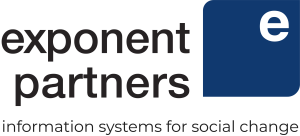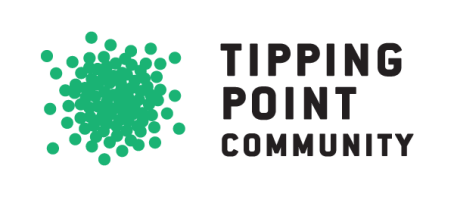Case Study: Tipping Point Community
Highlights
- Gained 360-degree view of grantee interactions, goals, and needs
- Streamlined grantee project and workshop data management
- Improved ability to understand grantee three-year progress and plan for impact
"Exponent Partners has been an absolute joy to work with. You don’t get to say that often about providers. It truly feels like a thought and design partnership. They know our process and model really well and have been great in thinking through how each piece influences the others, making sure we leave ourselves room to pivot." – Ashley Brown, Senior Associate, Impact and Learning, Tipping Point Community
Client Description
Tipping Point Community is a grantmaking organization that fights poverty in the San Francisco Bay Area. Since 2005, Tipping Point has raised more than $120 million, helping 23,000 people get on the path out of poverty in the last year alone. Grantees receive an annually renewable, unrestricted operating grant. Tipping Point recognizes that flexible, unrestricted support is unique in this field and critical for leaders to be responsive to their organizational priorities. Tipping Point is committed to a long-term relationship with grantees that shows progress toward goals and demonstrates results.
Tipping Point also provides management assistance through the strategic partnerships it builds with private sector corporations and nonprofit organizations. Beyond dollars, Tipping Point provides grantees the communications, technical and management assistance they need to grow and increase their impact. 100% of every dollar donated goes out the door.
Introduction
Exponent Partners originally helped Tipping Point Community move to a central grantee and fundraising solution on the Salesforce platform in 2010. The fundraising team had been using a legacy database and the program team was using Excel. “We wanted ‘both sides of the house’ to be together, funds in and grants out,” notes Nick Arevalo, Senior Program Officer, Impact and Learning at Tipping Point Community. “We also wanted to be able to capture our relationships comprehensively.” Their system provides a 360-degree view of grantee interactions, communications, and funding. It serves as the official source of knowledge for the organization.
All of Tipping Point Community’s departments now use Salesforce in their work. As their needs evolved, we worked with them to build performance management into their system. This case study tells the story of how they iterated on their solution to track their innovative management assistance model and its impact on grantees.
Evolving Needs
Grantee support tracking
Tipping Point Community is working on a growth plan that targets grantees across the spectrum of maturity (from early stage to those at scale) and is focused on building grantee efficacy to drive impact. Their hypothesis states that efficacy and scale drive impact, but efficacy comes first. One of Tipping Point’s key drivers of grantee efficacy is the management assistance support they provide.
“We had many different tools to track organizations’ needs, goals, and the support they received, but none of them were connected to one another,” says Ashley Brown, Senior Associate, Impact and Learning at Tipping Point Community. “In addition, we did not have consistent nomenclature and could not group types of support. We wanted to be able to analyze across projects, and view the resources, support, and interactions in one place.”
They wanted to see a higher level view of this support they provided their grantees. Specifically, they wanted to gain insight into their management assistance support, which offers grantees workshops, strategic planning projects, and other tools to help them build capacity.
Visibility into impact on grantees
Tipping Point Community also wanted to understand how their innovative long-term relationships and management assistance support contributed to organizations delivering program results, but their system was not yet set up to pull together these elements. “Our hypothesis is that if we provide certain types of support and money over a three-year period, we would expect to see that grantee move from one stage to the next across our framework,” Brown says. “We didn’t have a way to test whether or not that was true.” They were only tracking grantee engagement plans (including needs, goals, grants, and projects) in siloed one-year records.
Solution
Exponent Partners worked with Tipping Point Community to develop the Management Assistance Manager (MAMa), a custom workshop and project manager, within Salesforce. The MAMa organizes their partner projects and 35-40 annual workshop signups. It includes workshop attendance tracking, signups, and a custom workshop registration page. Exponent Partners built custom pages in Skuid (a third-party app for specialized user interfaces within Salesforce), tailored to Tipping Point Community’s unique workflows and data collection.
We also developed the Grantee Engagement Manager in Skuid. This Manager pulls grantee engagement data from multiple records into one clean interface, allowing Tipping Point Community to quickly view grantee progress. This includes goals, needs, grants data, projects, and other notes. Data saved in the Skuid interface is automatically written and synced back to Salesforce records, leaving the data structure untouched.
Results
Efficient grantee support
Using their new Management Assistance Manager, Tipping Point Community has been able to document assistance providers they work with more completely and plan for assistance. As well, they use it to manage workshops and collect their project and partner data in one easy-to-view interface. Rollup summary formulas calculate how much time their team spent on a given project automatically.
Partner projects are sorted more intuitively, saving time. With their Skuid interface, they can also add multiple organizations and providers to a project at once with a single click.
Workshop management has also become more efficient and effective. Through one clean interface, staff save time updating grantee attendance after a workshop by adding them all at once, rather than manually adding each grantee record. Their registration now has a branded screen and tracks signups automatically, rather than managing email or surveys. Tipping Point Community can also generate unique registration links and invitee emails with the Manager. “Our team doesn’t have to do anything to build an event registration page,” Brown says. “It was built on the front-end, allowing the team to quickly customize it by inputting information into a few fields that contain workshop-specific information, and immediately send out the registration link.”
Surfaced support insights
Pulling together their data into the MAMa has also helped Tipping Point Community to better understand their support at a glance. Brown describes the difference: “If I looked at a grantee record, I used to see a big list of activities they were part of and sort through them to see which ones applied to a certain project. Sometimes they didn’t have a descriptive name, so I would have to click through each one. Now I go to the project record and see the grantees and the interactions. The project is now the main ‘holding place’ for the information, so it speeds things up and makes it easier for us to understand what’s going on.”
With the Management Assistance Manager, Tipping Point also added standardized naming for their project data, making reporting easier and improving data quality. Arevalo notes, “As compared to our peers, we believe that the custom tool that we’ve built isn’t just something to manage money in, money out. We’re taking our system to another level with the ability to track the management assistance we’re providing. That’s a key value add in terms of our model. We don’t just want to know that we’re providing management assistance as an output. We want to understand whether it’s driving toward more impact and helping our organizations evolve faster.”
Visibility into grantee impact
Using their Grantee Engagement Manager, Tipping Point Community can pull together their grantees’ goals, grants, projects, and other relevant notes, and edit from one page. This allows them to plan for the many ways they will interact and meet grantee needs over the year.
“For these plans, there was data ‘living’ in multiple places in our system,” says Brown. “Using Skuid made it possible for us to bring those together. Now the user doesn’t have to go to all those places to interact with or add new data. That was the main goal and probably the biggest win!”

